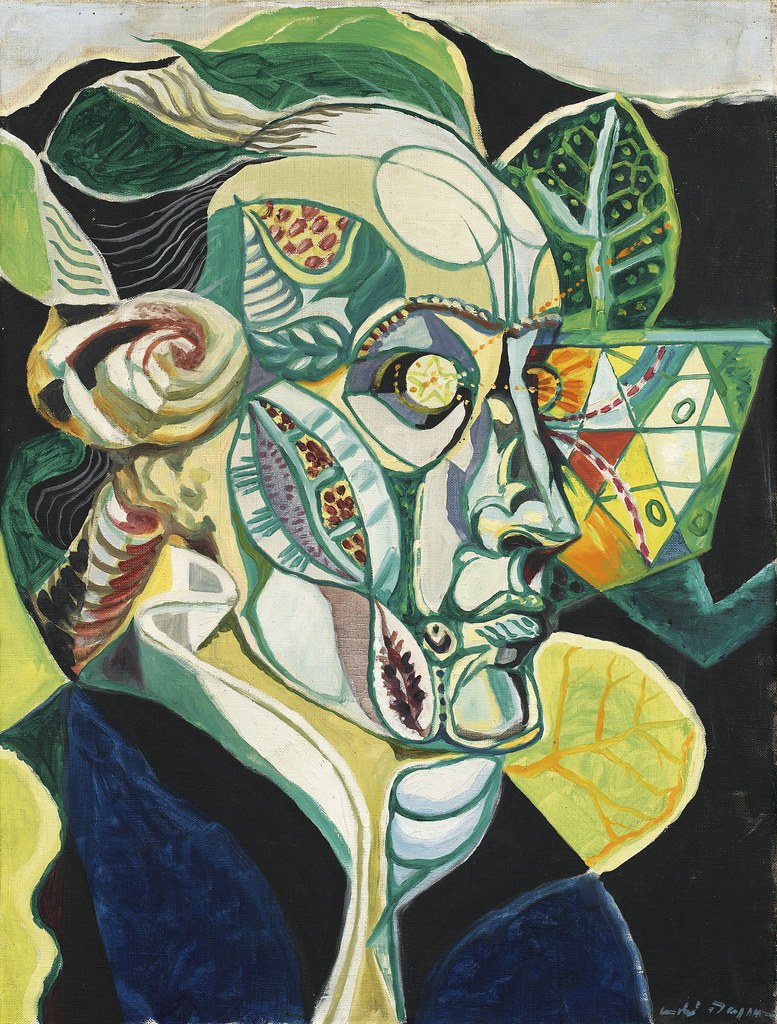The Birth of Psychedelia
In 1943, scientist Albert Hofmann synthesized and experimented with LSD, and in the resulting decades, this drug influenced art in a revolutionary way. LSD was initially picked up by many surrealist scholars and artists who were connected with Hofmann, and it had a heavy influence in the literature created during the time, before spreading into visual art. Surrealism and psychedelia both aim to better understand the subconscious mind, but psychedelia does so with inspiration from mind-altering substances.
Initial Artists
One of the first artists to pick up psychedelia was Antonin Artaud, who was primarily known for his writing, as well as his work in cinema, theatre. His work built off of surrealism, which was the predecessor to psychedelia, and his art appeared messy and unorganized to many people. However, his style heavily influenced many artists in the coming years. Artaud worked with André Masson, who was a painter and artist living near Artaud. They would create art under altered states of consciousness, alongside many other artists. Their work can be seen below.

Picture provided by Picryl – Antonin Artaud – self-portrait (1947)

Picture provided by Flickr – André Masson – Portrait of Goethe [1940]
Another artist who was critical to the birth of psychedelia was Henri Michaux. He was known for being a poet, writer and painter, and had many literary works that detailed his experiences on LSD. His work was noticed by many individuals who were experimenting with psychedelics, and aided in the popularization of LSD at the turn of the 1960’s. Below is a painting by Michaux, which was featured recently in a French museum.

Picture provided by Guggenheim Bilbao – Henri Michaux. The Other Side
The 1960’s Counterculture
Eventually, LSD and many other psychoactive drugs became very popular, and many musicians began taking these drugs as a way of inspiring creativity. Their psychedelic music became mainstream, and as such, they needed album covers and art that was psychedelic yet pleasing to the eye. At the head of this movement was the Grateful Dead, and many fans flocked to their events covered in psychedelic attire. Many artists arose during this time, including the great Rick Griffin, who created lots of art for the Grateful Dead, and Stanley Mouse, who also created art for the Grateful Dead, as well as the band Journey.

Picture provided by Flickr – Grateful Dead Clown Art by Rick Griffin

Picture provided by Wikimedia Commons – Grateful Dead Painting

Picture provided by Gallery 1506 – Journey Evolution World Tour 1979 Poster by Stanley Mouse
Lasting Impact of Psychedelia
Today, psychedelic art is still found throughout culture, ranging from album covers to tie-dye artwork and clothing. Additionally, as psychedelic drugs such as weed and psilocybin become legalized and decriminalized across the United States, many young artists are discovering psychedelics for the first time, leading to a small resurgence in psychedelic art, especially within ski and surf culture. The field of psychedelia will likely remain active throughout society as we attempt to better understand the subconscious mind, and will continue to remain active for many generations to come.
Citations
https://en.wikipedia.org/wiki/Psychedelic_art
https://en.wikipedia.org/wiki/Albert_Hofmann
https://en.wikipedia.org/wiki/Antonin_Artaud
https://en.wikipedia.org/wiki/Andr%C3%A9_Masson
https://en.wikipedia.org/wiki/Henri_Michaux
https://en.wikipedia.org/wiki/Rick_Griffin
https://en.wikipedia.org/wiki/Stanley_Mouse


2 Comments. Leave new
Dylan this is a great post! I think it was very cool that you showed how psychedelic art has been changing with time but has always remained based in the surreal. I think that’s why this aesthetic produces art that is interesting. Since the art is so surreal it is always extraordinary to tell what is going on. I also like that you brought up psychedelia’s ties to music. I think that an aesthetic can also inspire a sound style and attitude that music instills in people. This is a very cool idea and a cool post.
As someone who doesn’t know much about visual psychedelic art, I found it very cool how you presented the evolution of the aesthetic throughout time in a way that was very easy to follow. You mentioned how psychedelic art is still around in today’s culture through objects with tie-dies, and I was wondering if there were any other key characteristics, patterns, or art styles that define most pieces of psychedelic art today, or in other time periods.